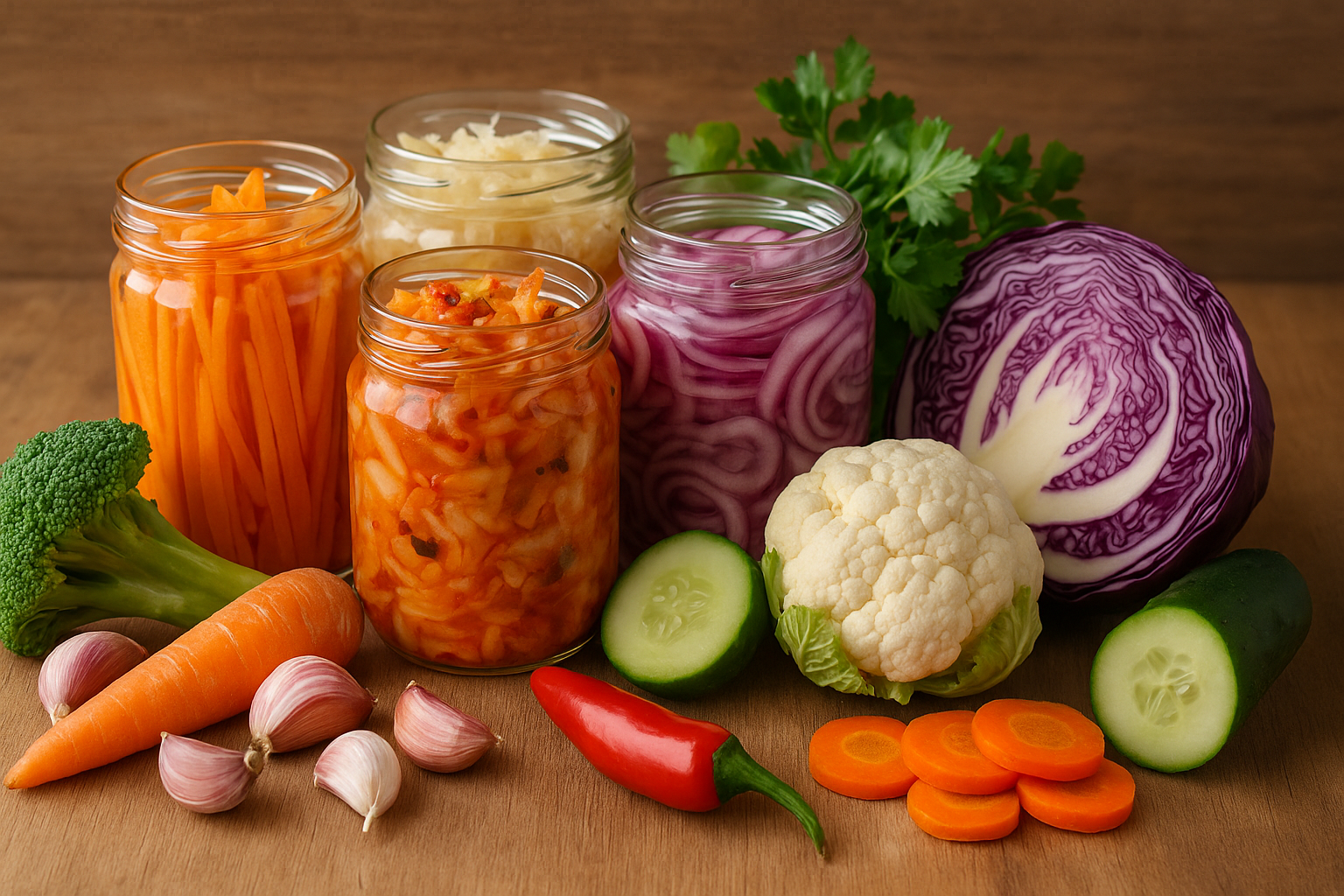Fermentation is not only magical—it’s also delicious. When we ferment vegetables, we don’t just preserve them; we enhance their flavor, boost their nutritional value, and add beneficial probiotics for gut health.
Did you know that almost any vegetable can be fermented? Here’s a list of the most popular and versatile options, plus tips on how to use them in everyday meals.
🥬 Cabbage: the queen of fermentation
Classic uses: sauerkraut, kimchi
Green or red cabbage is one of the easiest vegetables to ferment. You can use it on its own or mix it with others.
How to use it:
- On avocado toast
- As a side for rich dishes
- In wraps, salads, or bowls
🥕 Carrots: sweet and crunchy
Add color, texture, and a mild sweetness.
How to use them:
- As crunchy sticks for snacking
- In salads
- In sandwiches or burgers
🥒 Cucumbers: classic and refreshing
Classic use: pickles (quick or lacto-fermented)
How to use them:
- In salads
- On burgers or kebabs
- As a healthy snack
🧄 Garlic: bold flavor, probiotic benefits
Fermented garlic becomes milder and easier to digest.
How to use it:
- Blended into sauces or dressings
- On toast or with hummus
- In cooked dishes (add at the end to preserve probiotics)
🧅 Onions: sweet and tangy
Red onions are especially tasty when fermented.
How to use them:
- In tacos or arepas
- On toast
- In salads
🌶️ Peppers and chilis: for the bold
Ferment mild or spicy chilis for a flavorful punch.
How to use them:
- As a base for hot sauces
- As a spicy topping for warm dishes
- In quesadillas or pizzas
🥦 Broccoli and cauliflower: underrated stars
A bit more delicate, but with great results when done right.
How to use them:
- In grain bowls (with rice or quinoa)
- As a crunchy snack
- In warm salads
🥒 Other veggies you can ferment
- Beets: for a deep earthy flavor and rich color
- Green beans: crunchy and perfect for snacking
- Radishes: aromatic and great for kimchi mixes
🌱 Tips for Choosing Vegetables to Ferment
- Use fresh, pesticide-free produce
- Avoid overly soft or soggy vegetables
- Cut into uniform pieces for even fermentation
- Combine watery vegetables (like cabbage) with firmer ones for better texture
👩🍳 How to Use Fermented Veggies
The best part of fermented veggies? You don’t have to eat them alone. They’re great in:
- Salads
- Toasts and sandwiches
- Rice or noodle bowls
- Tacos, arepas, wraps
- As soup toppings
- With scrambled or fried eggs
Ready to fill your fridge with vibrant colors, living bubbles, and bold flavors?
Vegetable fermentation is a world worth exploring!
